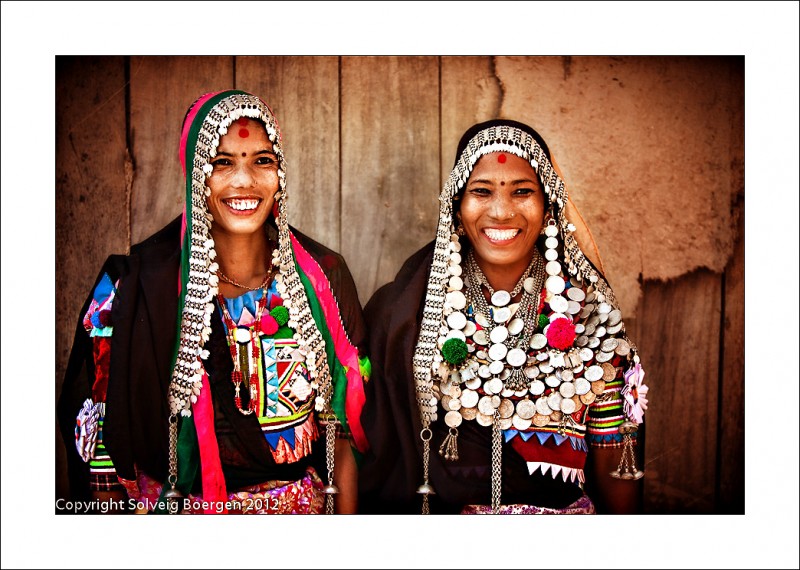
Rana Tharus – Kanto manaitra eo ambony akanjo marevaka sy voaly mainty ny helatrelatry ny volafotsy. Saripikan'i Solveig Boergen. Nahazoana alalana
Raha tompontany taloha ny Rana Tharus — ireo teratanin'ny distrikan'i Kailali sy Kanchanpur ao amin'ny farany andrefan'i Nepal — dia vao vavolombelonan'ny fandrobana, fanimbazimbana ary ny fanavakavahana.
Robain'ny andian-jiolahy isan'andro ireo tanàna kelin-dry zareo mitoka-monina. Nafindra toerana ry zareo rehefa nitarina ny Valan-javaboary iarovana ny biby mpirenireny ao Shuklaphanta, ary maro no very tanindrazana nandritra fanantanterahana ny fandaharan'asa fametrahana mponina (voanjo) vaovao. Ny Tharus ao Chitwan izao dia nahena ho ny 14 isanjaton'ny faritra nitoerany taloha ihany no azony onenana rehefa nisy programa miady amin'ny tazomoka namendraka DDT (Dichloro Diphenyl Trichloroethane) nanodidina ny tranon-dry zareo. Taloha ry zareo nonina tamin'ny 90 isanjaton'ny faritra.
Sarotra ny mahita tahirinkevitra voasoratra momba ny Rana Tharus noho ry zareo mitoka-monina, hoy i Bikram Rana nanoratra tao amin'ny blaoginy:
In India Rana Tharus of Khiri, and Nainital are under scheduled tribes. In case of Nepal in terms of habitats Rana Tharus are the native residents of Kailali and Kanchanpur since 16th century and are the first settlers of the two districts later they were joined by Dangauras of Dang and after the eradication of malaria and resettlement plan of Panchayat regime, Khasiyas [tribes] joined.
Ao India dia sokajiana ho foko iangarana fa tsy itongilanana ny Tharus-n'i Khiri sy ny Nainital. Raha resaka fonenana ao Nepal dia mponina teratanin'i Kailali sy ny Kanchanpur ry zareo hatramin'ny taonjato faha-16 ary ry zareo no voanjo nanoriponenana voalohany tamin'ireo distrika roa ireo, taty aoriana vao nanatevin-daharana an-dry zareo ny Dangauras avy ao Dang ary taorian'ny nahafoana tanteraka ny tazomoka sy ny drafi-pametrahana mponina vaovao araka ny rafitra Panchayat (fokonolona mizaka tena) dia nanampy isa azy ireo ny [foko] Khasiyas
Na dia teo aza anefa izany zavatra hafahafa rehetra izany dia tsy nanadino ny kolontsainy sy ny fomban-drazany ry zareo. Mbola miavaka ny fomba fandaminan-dry zareo ny fiainany andavanandro ary mahamiramirana izay rehetra mpakasary sy mpiangaly ny fandravahana ny fomba fiakanjo sy firavahana ara-pombandrazany.
Solveig Boergen, Alemana iray mpaka sary izay nonina sy niasa tany Japan, dia nanao dia lavitra tany amin'ny distrikan'i Kanchanpur any andrefan'i Nepal handrakitra ny fiainana andavanandron'ny Rana Tharus. Indreto ny zavatra hitany:
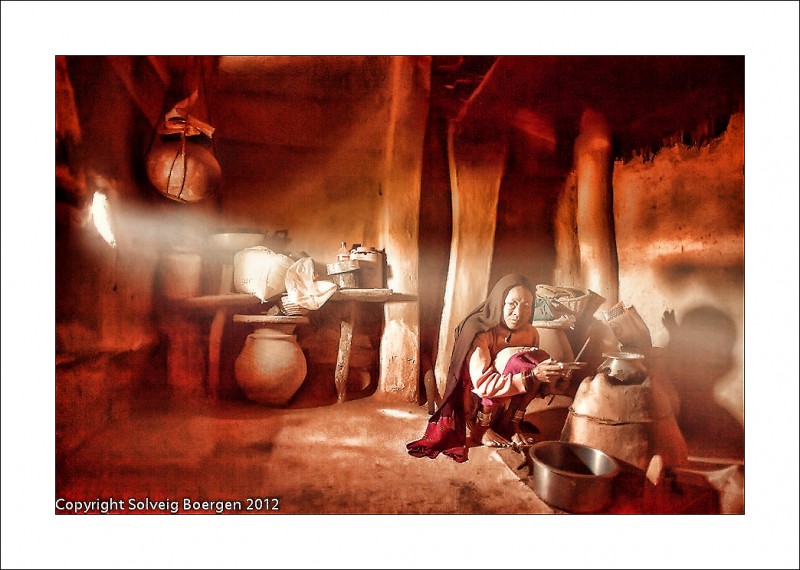
Rehefa niditra avy eo amin'ny varavarankelin'ny trano tomboka ny masoandro, dia nisahirana tamin'ny fikarakarana ny sakafo ny vaviantitra Rana iray. Nanazava ny manodidina ny taratra mahery ary lasa niova ho sarintava amin'ny volontanimena ny faritra maizina ao an-dakozia.

Tafiditra ao anatin'ny raharaha maraina ny fanadiovana ny toerana sy ny famoahana ny omby hivoaka ankalamanjana.
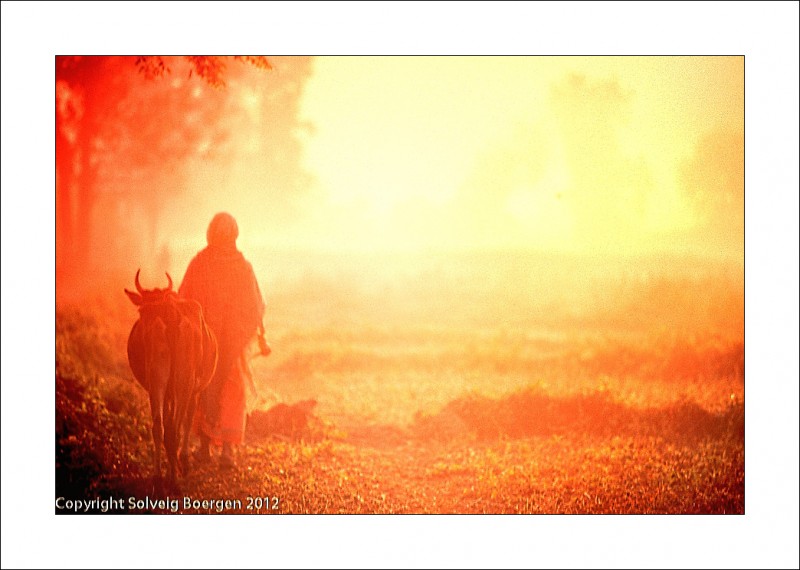
Tafiditra amin'ny raharaha maraina ny fanadiovana ny toerana sy ny famoahana ny omby hivoaka ankalamanjana.
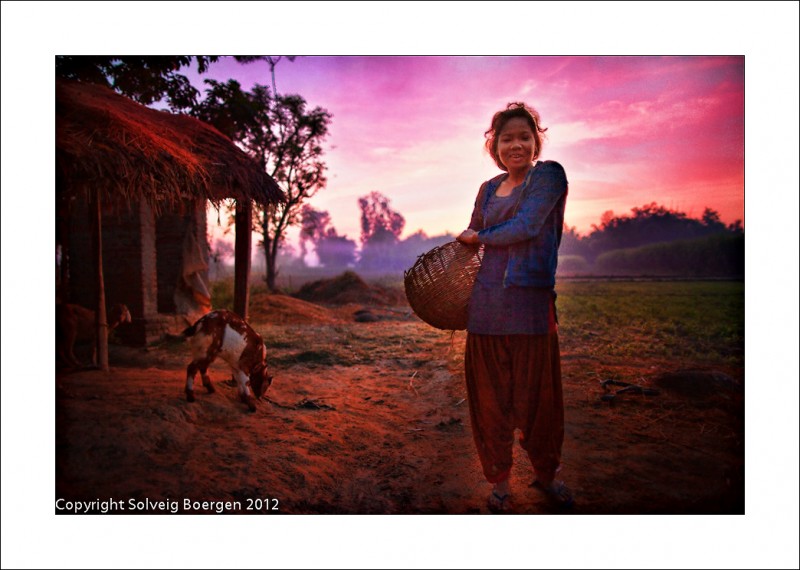
Manampy amin'ny fiandrasana osy ity tanora iray ity sy amin'ny fitondrana vilona ho an'ny biby.
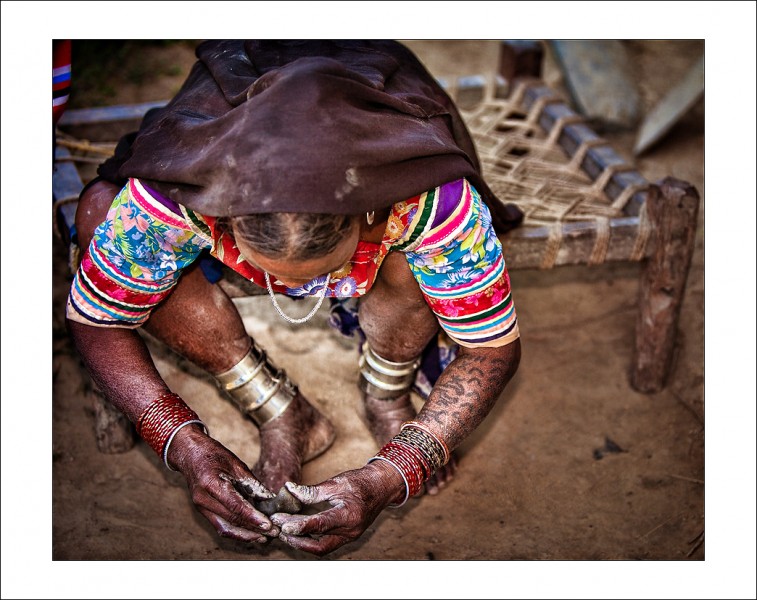
Mipetraka eo ambony tady fandriana ity vehivavy miakanjo marevaka ity ary manamboatra sarivongana amin'ny tanimanga hilalaovan'ny zafikeliny amin'ny fetibe hoavy. Mandoko ny aingam-panahiny avy amin'ny voaary izy ataony amin'ny tombokavatsa amin'ny tanany sy ny loko marevaka amin'ny akanjony.
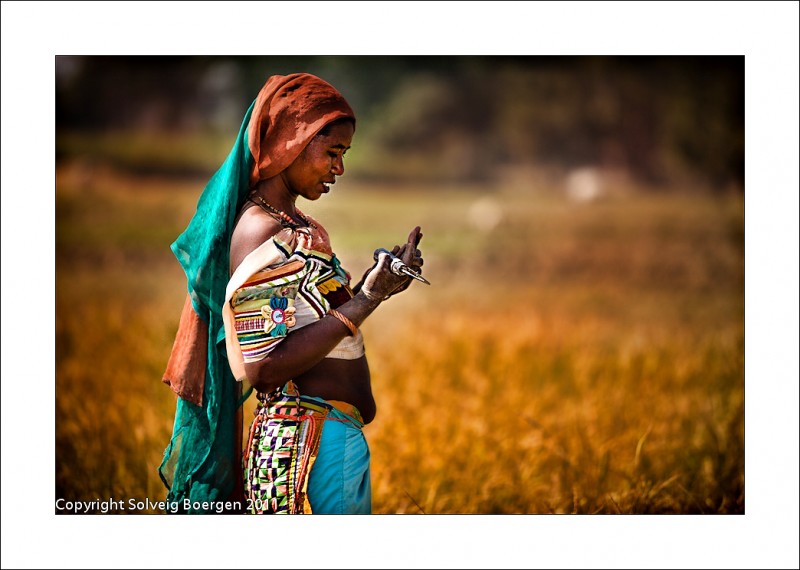
Toy ilay Mpijinja Manirerin'i William Wordsworth, dia mijinja irery ny akotry ity vehivavy ity. Miavaka ao anatin'ny ranomasin'ny loko vony ny akanjony mamirapiratra.
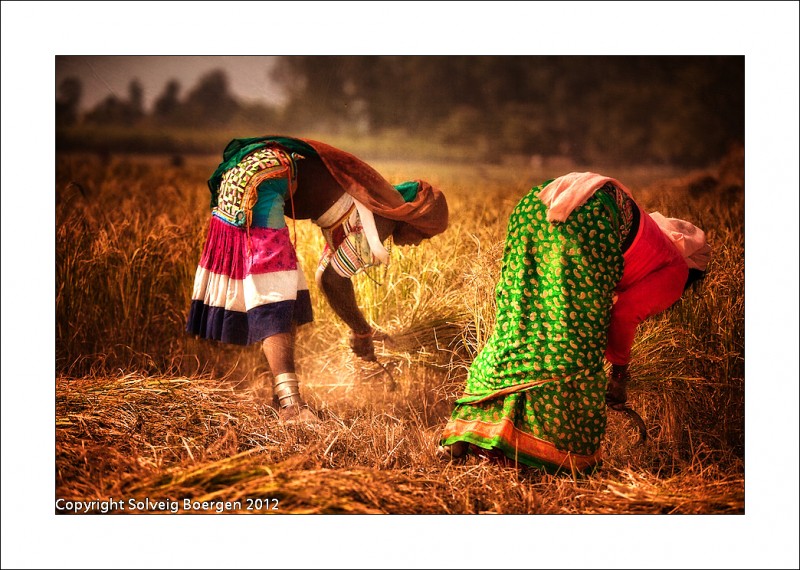
Rehefa nankeo aminy ny namany dia tahaka ny manao fifaninanana ny fitafy nentin-drazana nentiny sy ny fiakanjo maoderina ankafizin'ilay namany. Samy manjelanjelatra anivon'ny saha mavo ny loko marevaka entin'izy roa.
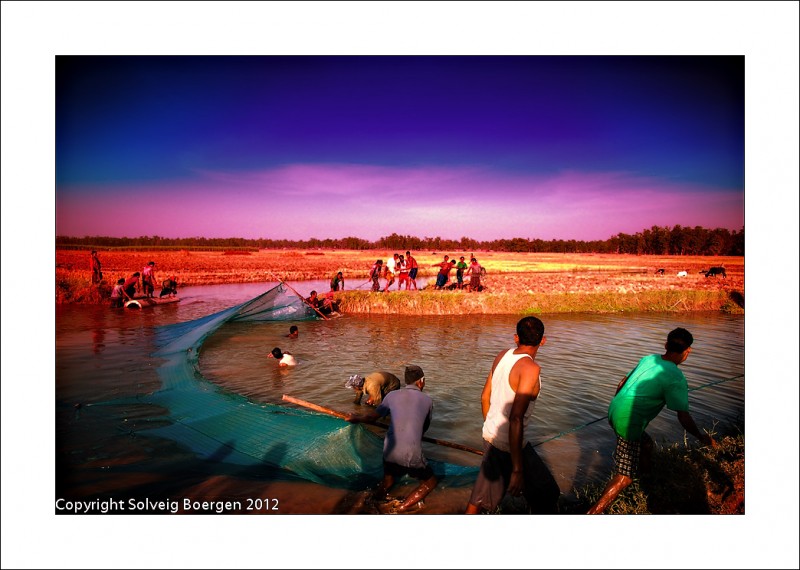
Fotoana tsara jerena ny fiarahan'ny fokonolona manihika.

Fifaliana anaty fiarahana miasa sy ny fizarana ny haza – feno dia feno ny zavatra azo ianarana avy amin-dry zareo.

Ampy ho an'ny rehetra ny haza.
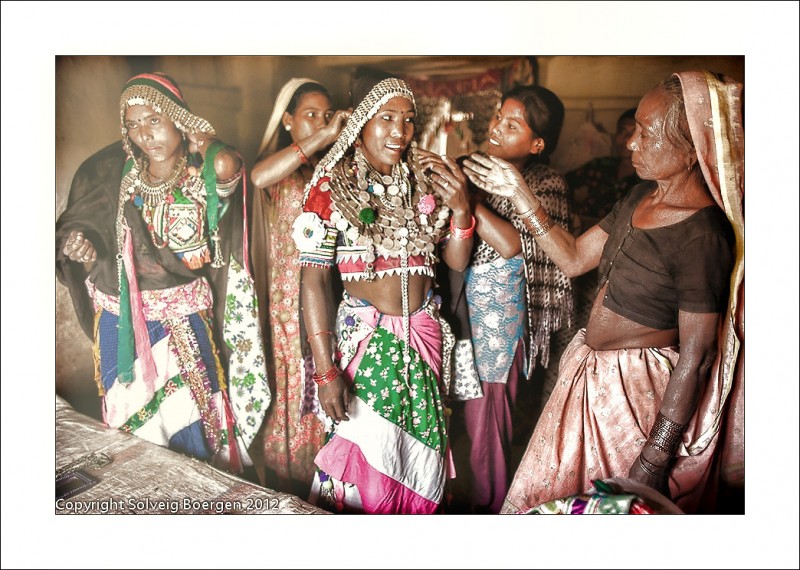
Vanim-potoanan'ny fampakaram-bady izao ka mamoaka ireo ravaka ananany ny vehivavy.
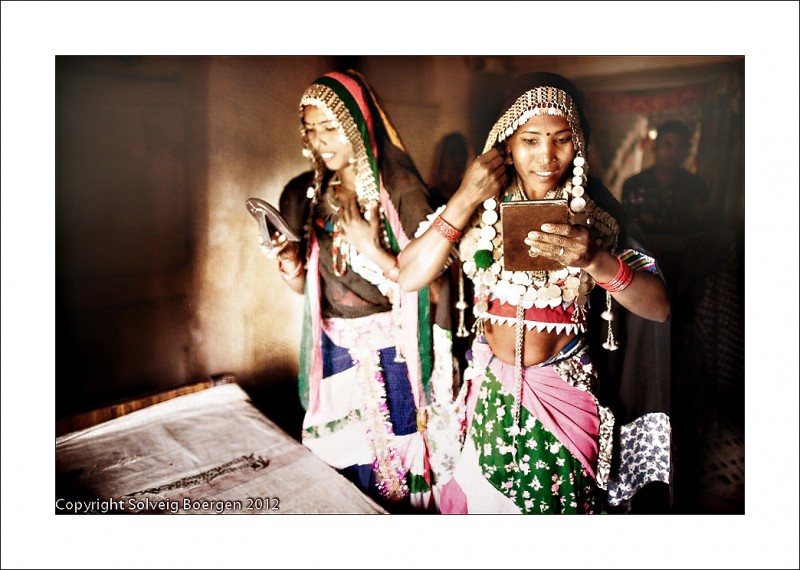
Ry Fitaratra! Ry Fitaratra! Iza no tsara indrindra?
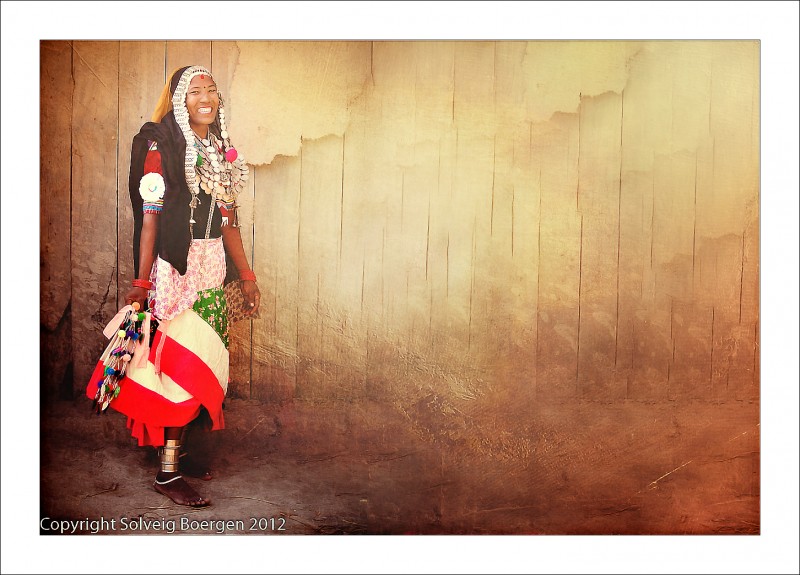
Ilazao aho raha tsy kanto jerena.
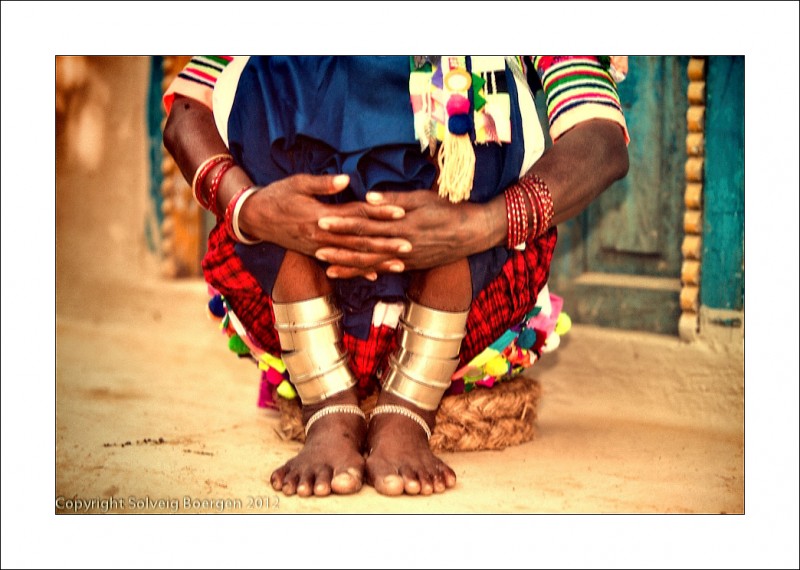
Ary tsy ataon-dry zareo afa-bela ihany koa ny tongotry ry zareo. Ataony mivesatra ravaka volafotsy ihany koa.
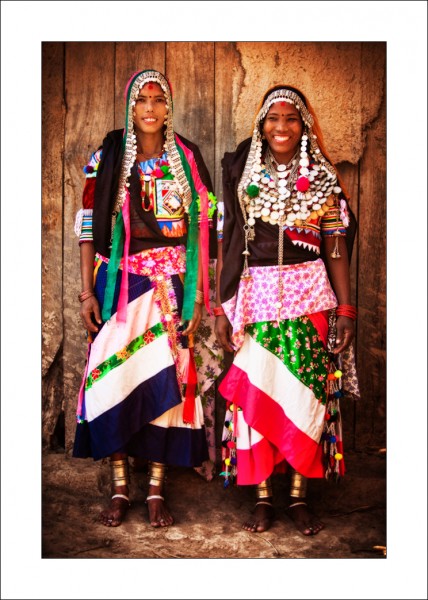
Tahaka ny hakanton'ny sanganasan-dry zareo amin'ny fitafiany, ny loko marevaka isafidianan'ny Rana dia nakana aingam-panahy avy amin'ny natiora.
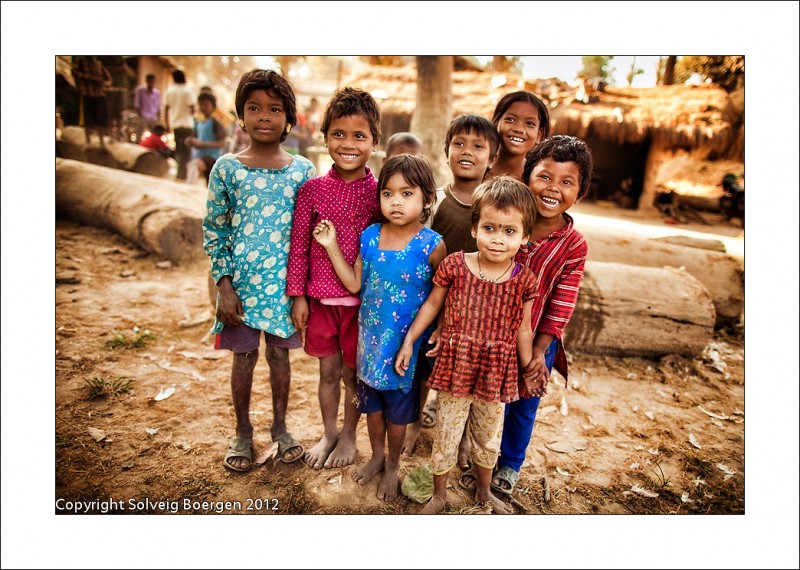
Ny zaza, sady tsy voakarakara no tsy mikarakara tena, kosa dia milalao sy mivezivzey manodidina ny tanàna. Sarobidy sy tsy manantsiky ny tsikin-dry zareo.

Hanaraka ny dian'ny razambeny ve ireto zaza ireto ka hitahiry ny kolontsain-dry zareo – ny hoavy no mamaritra izany.
Ny sary rehetra dia nahazoana alalana. Misy endrika iray amin'ity tantara ity navoaka tao amin'ny blaogy Voice of Tharus.






